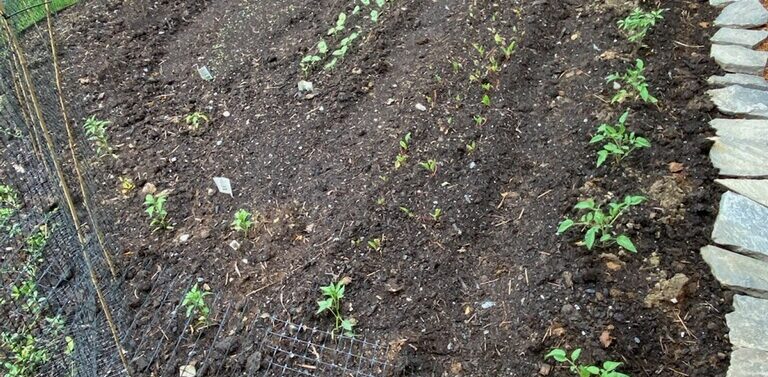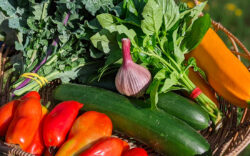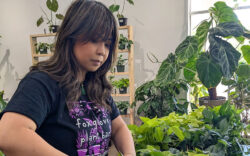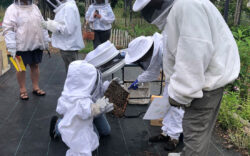Gardening advice is everywhere, and for a beginner, the amount of information can feel overwhelming at times. If you want to start a vegetable garden this year, here are a few simple ways to start.
Choose your soil: The first thing you want to consider in your garden is your soil. Healthy soil means healthy plants and tasty produce. Avoid mixes labeled “topsoil” and anything cheap in April. In the summer, stores may discount bagged soil, but lower prices at big box stores generally means lower quality. To dodge big box stores completely, try the food scraps compost from Athens-Clarke County’s composting operation. At $5 for a five-gallon bucket and $20 for a cubic yard (that’s about one truck bed), it’s a good deal. I’ve used this compost for two years now, and I’m a huge fan. It contains chunks of wood and bark, but much of the lower-priced bagged soil does, too, without the good quality compost. Make sure you get the food scraps compost and not the biosolids compost if you’re growing food. I’ve purchased the biosolids for filling dog-engineered holes in my lawn and starting flower gardens, but I don’t use it for edible crops.
Pick a container: Veggie container gardens are the easiest by far. Pick a container (preferably with a depth of at least 12 inches and a 12-inch diameter), make sure there are a few drainage holes, fill with soil, and you’ve got a new home for a plant! Now, for the caveats: Different containers work differently in various environments. Five-gallon buckets will degrade in one harsh summer season, unless made of food-grade plastic. Terracotta pots look beautiful, but they are brittle and can shatter easily. The internet is full of cutesy photos of repurposed tires, concrete blocks and rubber rain boots with blooming plants. Beware: The internet deceives. Those containers can heat up with our summers and fry Georgia plant roots. So what should you look for? Durable plastic—whether made specifically for plants or emptied of the five gallons of pickles it once held. Metal containers also work well, especially when painted light colors. Ceramic pots have a similar feel to terracotta, but they are harder to accidentally break. There are also all sorts of grow bags available with products made of durable plastic to biodegradable jute. If you have the budget and interest, it’s a good idea to try a few different products to get the feel of what works best for your garden.
Lay down some cardboard: If you’re looking for more of an in-ground garden, cardboard can be your best friend. For this, you’ll want to cut the lawn as short as possible, place the cardboard flat on the ground, spread about 8 inches of compost and plant into the compost. This is how I built my garden. A trim on the lawn weakens weed roots, while the cardboard blocks photosynthesis, killing most (but not all) of the weeds. It’s best to use brown cardboard with little to no coloring. White cardboard can be bleached and isn’t a good additive to your garden. Be sure to remove stickers, tape and staples. Otherwise, you’ll be seeing them again. Plant into the compost or garden soil on top as soon as possible to prevent erosion from carrying away your hard work. Some folks like to make a border of logs or bricks in order to keep cardboard flaps down and compost within bounds. I’ve done it both ways and, while the border is neater, it’s not needed.
Manage your expectations: None of these suggestions will give you a Martha Stewart-level garden. But they will help you grow a tomato plant this summer if you’ve never grown a tomato before. And most of these suggestions won’t cost too much to get you started. I know the traditional way to start a garden is to till the soil once (or several times), but that’s not a requirement if you can provide plants with more than hard-packed clay soil. If you make a few missteps this spring, chalk it up to experience and move forward. All growers err and kill plants—good gardeners learn from their mistakes and do better (or at least, kill it differently) the next time.
Like what you just read? Support Flagpole by making a donation today. Every dollar you give helps fund our ongoing mission to provide Athens with quality, independent journalism.










